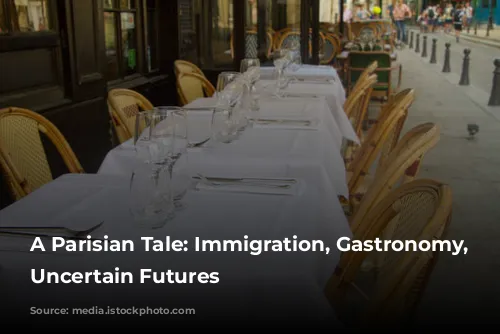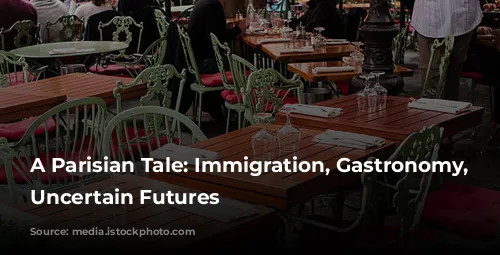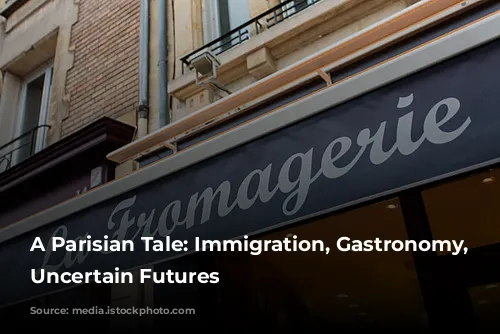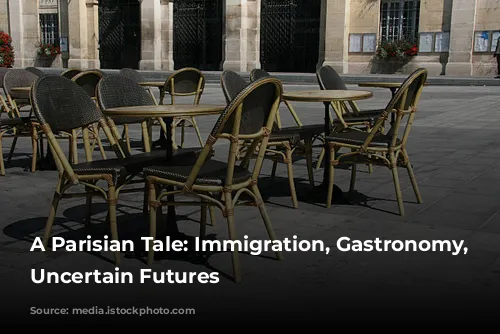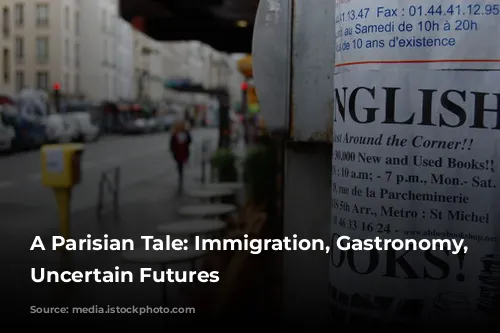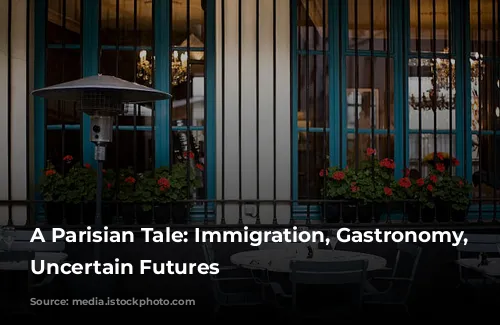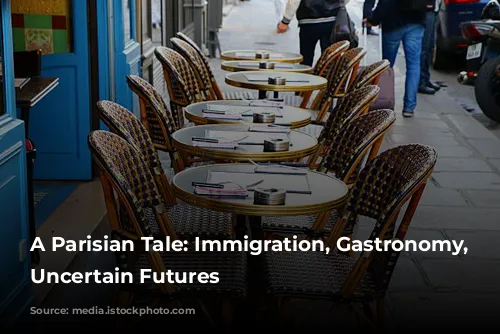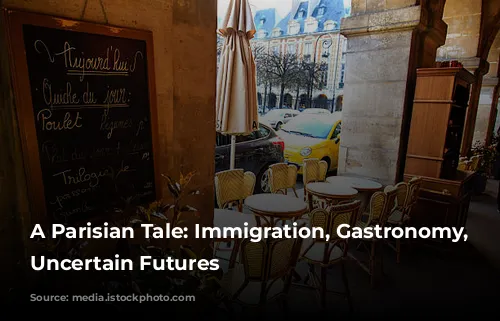Step into the bustling Parisian scene on Rue Bretagne, where Le Pinardier, a classic French bistro, hums with life. This vibrant terrace, a haven for locals and tourists alike, is a testament to the city’s renowned culinary culture. But behind the charming facade lies a story that reflects a complex and often debated issue – immigration.

The Heart of the Kitchen
The aroma of fresh herbs and simmering sauces wafts from the kitchen, a haven of culinary artistry. This is where 24-year-old Sazal Saha, a chef from Bangladesh, weaves his magic. Saha, a skilled culinary artisan, embodies the vital role immigrant workers play in the French food industry. He arrived in France five years ago, eager to hone his craft and contribute to the nation’s gastronomic tapestry.
Saha’s journey from Bangladesh to the heart of Paris is a common story in the city’s kitchens. His dedication and expertise, like that of many immigrant chefs, are the backbone of the French food scene. While the aromas of freshly baked bread and simmering stews fill the air, the challenges of working alone in the kitchen are ever-present. “Managing the kitchen is not easy,” admits Saha, “but I am used to it.”
The Culinary Crossroads
The French culinary landscape, a tapestry woven with intricate flavors and traditions, thrives on the diversity of its workforce. The kitchens of Paris, bustling with activity, showcase a melting pot of cultures. “Most of the people working in kitchens here are either from Bangladesh or Sri Lanka,” reveals Florian Mousson, owner of Le Pinardier.
Mousson, a proud restaurateur with generations of culinary heritage, acknowledges the crucial role of immigrant workers in his business’s success. “My business would not survive without them,” he states emphatically. He paints a vivid picture of the demanding work, emphasizing the long hours, standing positions, and intense heat of the kitchen environment. “There are fewer and fewer French people who are willing to do this job,” he observes.
A Question of Identity and Opportunity
The influx of immigrant workers raises a crucial question: is it a matter of preference, or a reflection of a workforce shortage? Mousson clarifies, “I don’t care if my cook is French or a foreigner. But statistically, you’re more likely to hire a foreigner because there are simply more foreign applicants.” He highlights that it’s not about lower wages, but rather the dedication and resilience required to thrive in such a demanding environment.
Saha’s story underscores the opportunities and challenges faced by immigrant workers in France. He’s found success in Paris, securing an apartment and forging a life in the city he loves. However, the looming possibility of a far-right government casts a shadow of uncertainty. “I am a little worried,” he admits, voicing his concerns about the potential impact on his future.
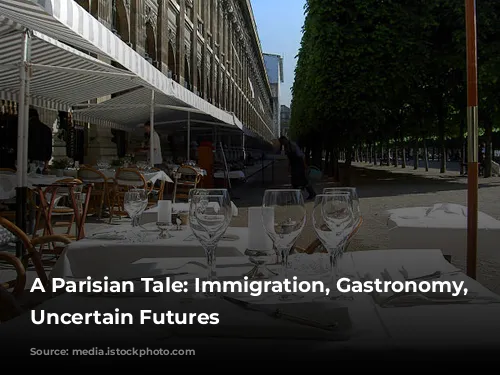
A Future Under Scrutiny
The rise of the far-right Rassemblement National party, fueled by anti-immigration sentiment, has sparked anxieties within the immigrant community. Their “France first” agenda calls for stricter immigration controls and preferential treatment for French citizens in the social welfare system. This rhetoric has left many, like Saha, questioning the future of their lives in a country they call home.
Despite the uncertainty, Saha holds onto his passion for France and its culinary traditions. He takes pride in his role in the Parisian food scene, contributing to the city’s vibrant gastronomic tapestry. “I am proud to work in a French restaurant,” he affirms, his voice tinged with both determination and hope.
The story of Sazal Saha and Le Pinardier exemplifies the delicate interplay between immigration, culture, and economic realities. It raises questions about the role of immigrant workers in shaping national identities and the potential impact of political shifts on their lives. The future of this vibrant culinary landscape, like the future of many immigrant workers in France, remains uncertain.
